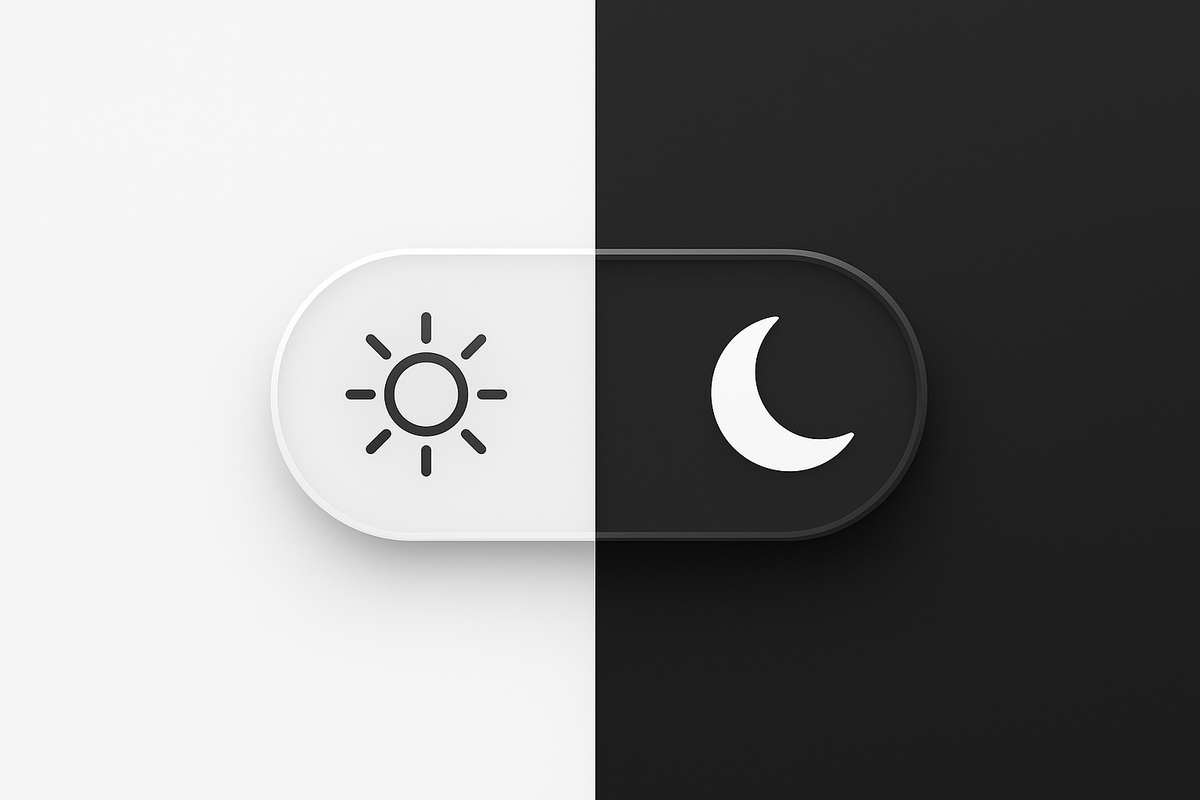2: Dark mode: The perks

In essence, what are the perks?
We discussed the switch and some of its benefits. But dark mode is more than just a stylistic choice. It delivers measurable benefits for eye comfort, battery life and even the way you interact with your device.
Dark mode reduces eye strain
You would think general coolness and aesthetics are the most common reasons people switch to the dark side. But no, eye strain remains the single most common reason people choose to switch to dark mode. When you’re staring at a bright, high-contrast screen in a dimly lit room, your eyes are forced to adjust to the glare constantly. This ongoing effort forces adjustments of the pupils and can lead to headaches or blurred vision. If prolonged, it can lead to a familiar sense of visual fatigue.
Dark mode addresses this by lowering overall luminance and softening the contrast between text and background. Instead of fighting against a wall of bright light, your eyes can focus more naturally on the shapes of the letters themselves. In low-light conditions, the visual environment reduces the strain on your visual system.
Battery saving is life or death for your device
Dark mode can significantly extend battery life on OLED and AMOLED displays. These screens illuminate pixels individually, so black pixels are essentially “off” and consume no power. Purdue University researchers found that dark mode could reduce energy consumption by up to 63% compared to bright themes on OLED devices.
But battery savings are only part of the story. Dark mode also changes the way you experience your device on a day-to-day basis. Without the constant glow of a bright background, notifications feel less jarring, late-night reading is easier, and your overall interaction with the screen becomes more deliberate. It’s a subtle shift, but over time it can reshape your relationship with technology. Making it feel less like an ever-present glare and more like a comfortable companion.
Dark mode, or more like stealth mode?
There’s a certain satisfaction in flying under the radar, and dark mode is your one-off ticket to digital low profile. In dim cafés, late-night buses, or during that 2 a.m. It keeps your screen from turning into a portable lighthouse. A bright interface not only lights up your face like a stage it also broadcasts your activity to anyone within a few seats. Dark mode, on the other hand, takes the edge off the glare and melts into the ambient light stealth style.
It’s a quiet nod to privacy, turning your device into something less like a billboard and more private note. This isn’t just about secrecy for secrecy’s sake. Let’s face it, if you think people are that interested in your phone the your hubris is showing. Rather, I think it’s about control. Sometimes you don’t want your coworker seeing your surprise-gift search, or the person next to you on the train catching that you’re, yes, still reading about medieval bread recipes. Stealth mode lets you curate what the world sees, and more often than not, that’s nothing at all.
And in a way, it feels empowering. You’re the one deciding when your screen stands out and when it blends in. Bright mode has its time and place, but dark mode? That’s for when you’d rather keep your story between you and the pixels.




